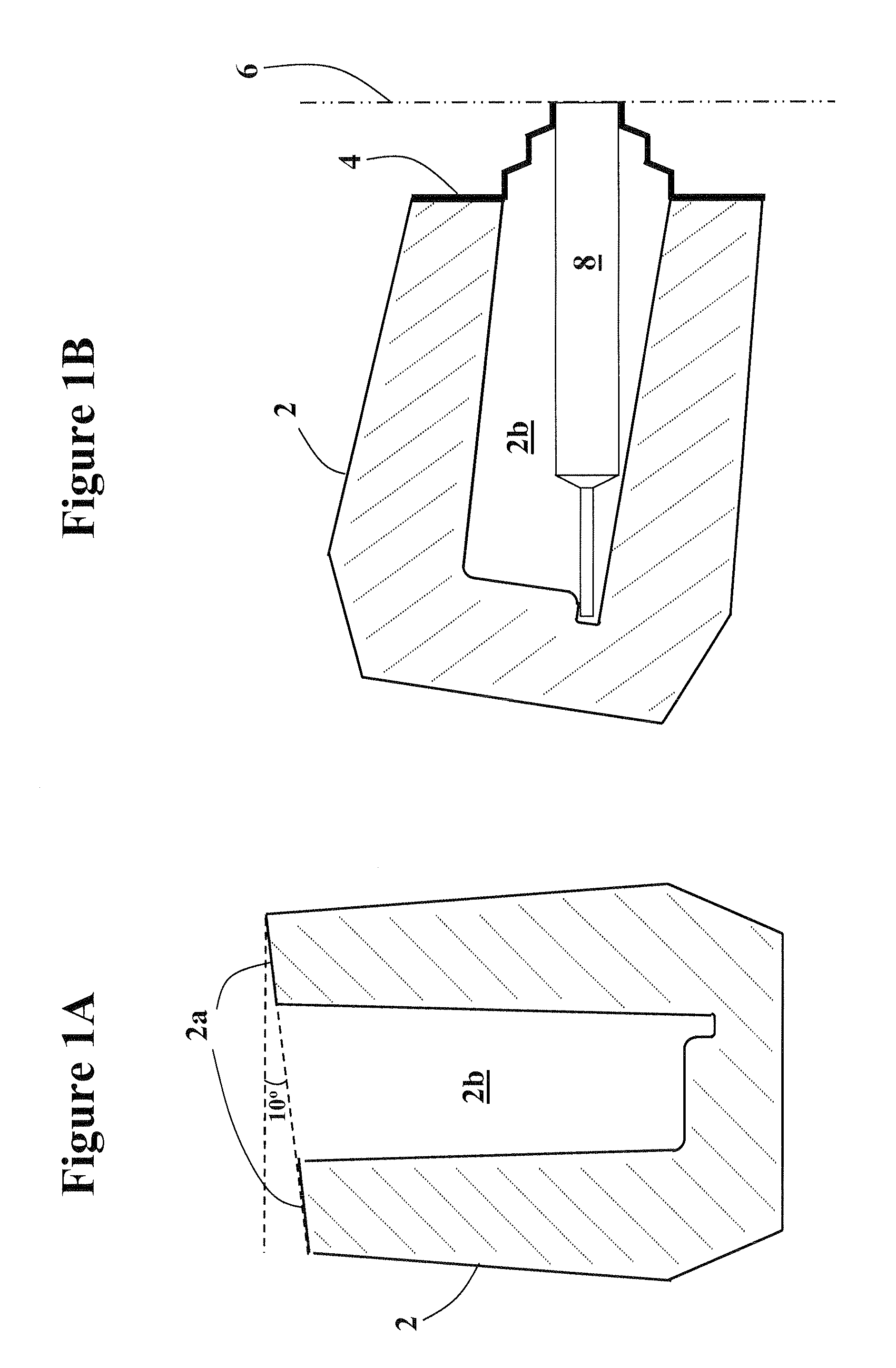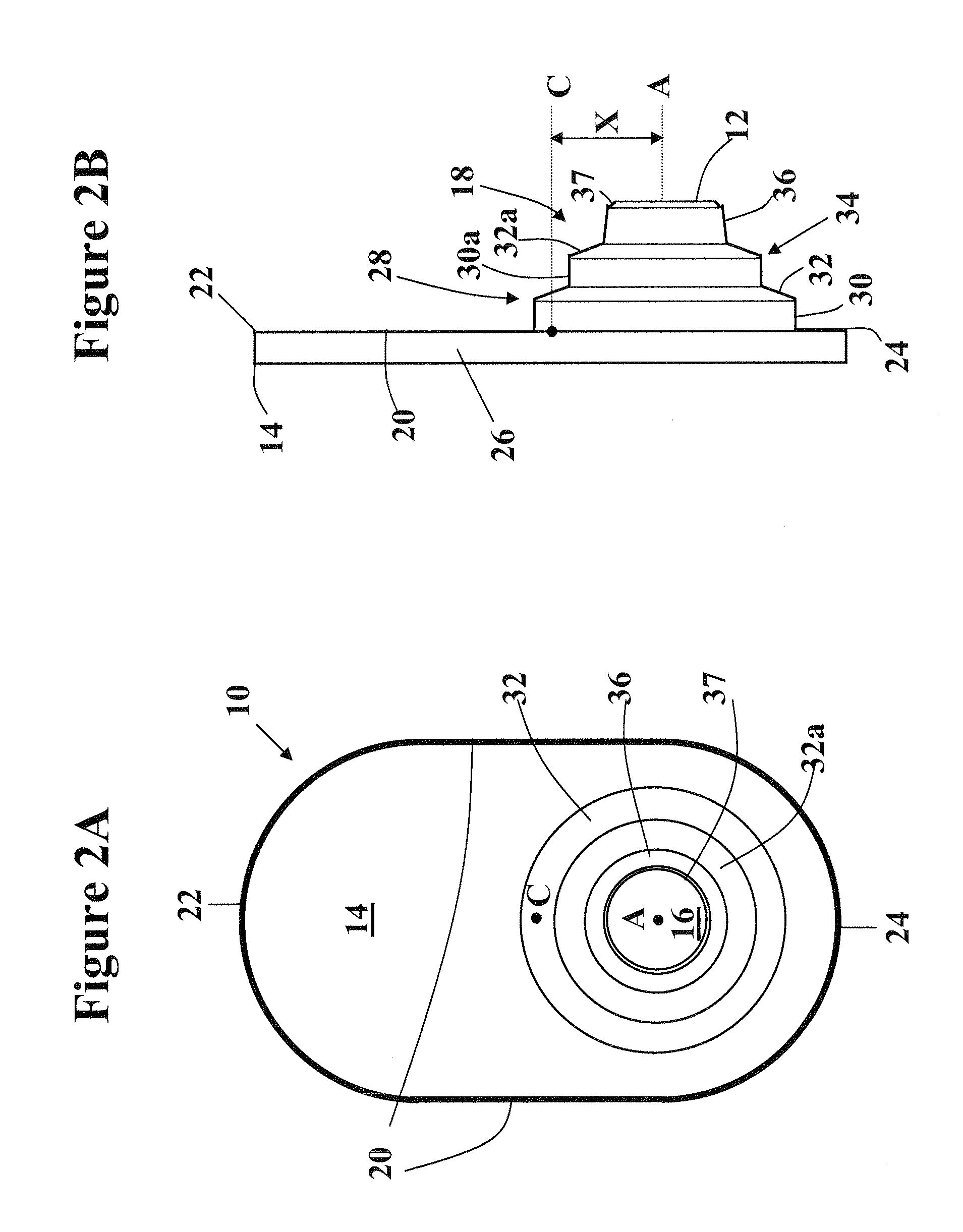Feeder element
a technology of feeder sleeve and feeder plate, which is applied in the field of feeder element, can solve the problems of shrinkage defects in casting, difficult to retain the position of the feeder sleeve on the swing plate during normal movements, and inability to simply use a larger standard shaped feeder, etc., to achieve the effect of preventing deformation, and reducing the risk of shrinkage defects
- Summary
- Abstract
- Description
- Claims
- Application Information
AI Technical Summary
Benefits of technology
Problems solved by technology
Method used
Image
Examples
examples
[0117]Various feeder systems were prepared using the feeder sleeve 40 as in FIG. 3, in combination with various feeder elements, and moulded as described above. The KALMINEX feeder sleeve had the dimensions 90 mm length×60 mm width×60 mm depth, where the length and width are the dimensions of the open face, and the depth of the feeder was measured from the open face to the closed back wall of the feeder.
[0118]The results are summarised in Tables 1a and 1b below.
TABLE 1aFeeder Element DetailsBoreBore OffsetRimRimFeeder SystemElement Type / DesignDiameter(HC)Rim Type / DesignWidthAngleComparative 1Resin bonded sand25 mm15 mmNonen / an / aDesign as in FIG. 6Comparative 2Resin bonded sand18 mm15 mmNonen / an / aneck down plus 0.5 mmsteel, circular compressible.Design as in FIG. 7Comparative 30.5 mm steel, obround,18 mm15 mmNonen / an / acompressible Design asin FIG. 8Comparative 40.5 mm steel, obround,18 mm15 mmNonen / an / acompressible Design asin FIGS. 10A / BExample 10.5 mm steel obround18 mm15 mmContinu...
PUM
 Login to View More
Login to View More Abstract
Description
Claims
Application Information
 Login to View More
Login to View More - R&D
- Intellectual Property
- Life Sciences
- Materials
- Tech Scout
- Unparalleled Data Quality
- Higher Quality Content
- 60% Fewer Hallucinations
Browse by: Latest US Patents, China's latest patents, Technical Efficacy Thesaurus, Application Domain, Technology Topic, Popular Technical Reports.
© 2025 PatSnap. All rights reserved.Legal|Privacy policy|Modern Slavery Act Transparency Statement|Sitemap|About US| Contact US: help@patsnap.com



